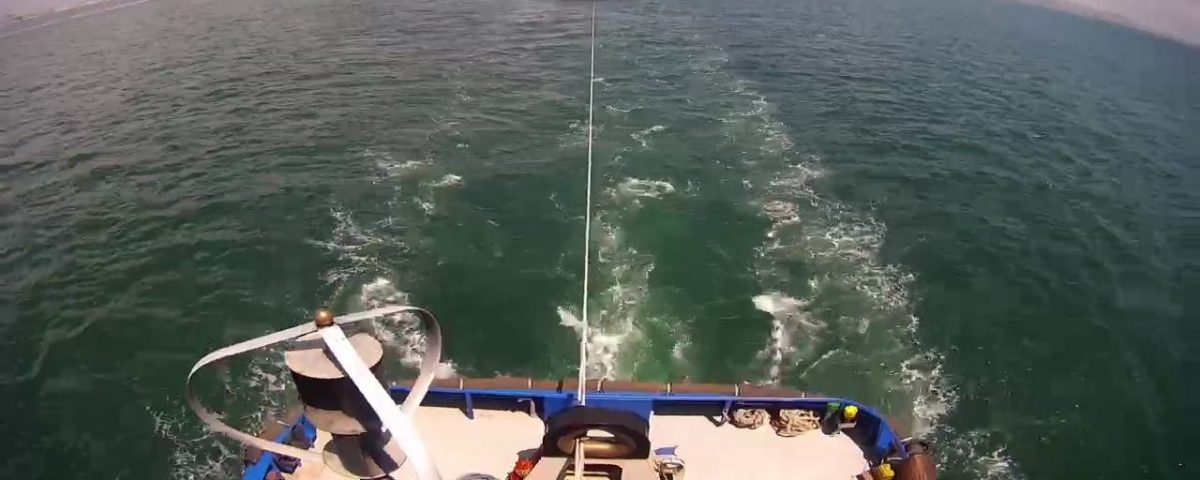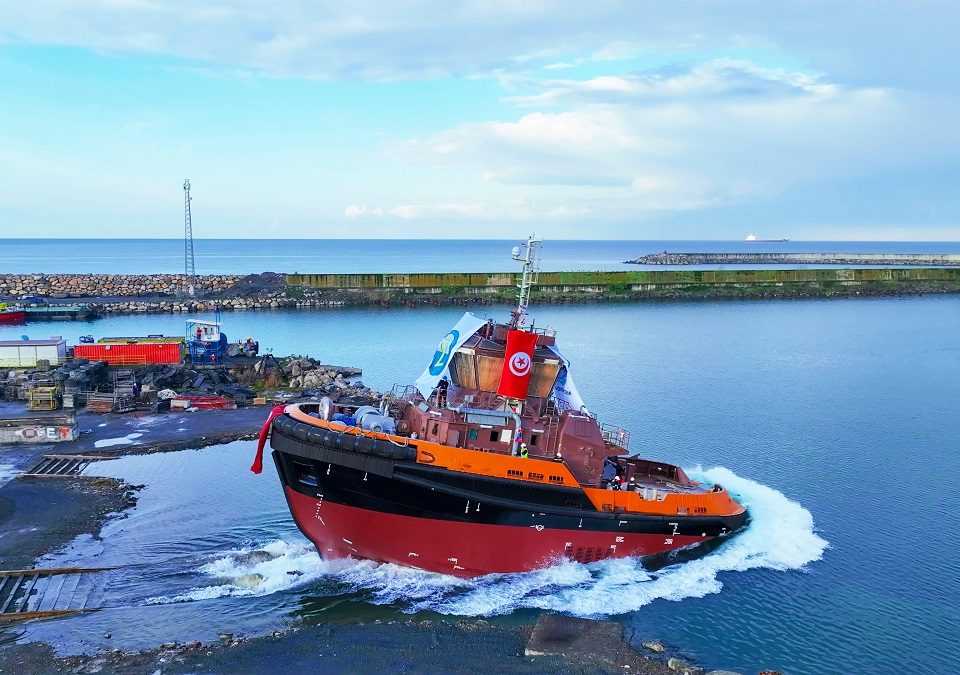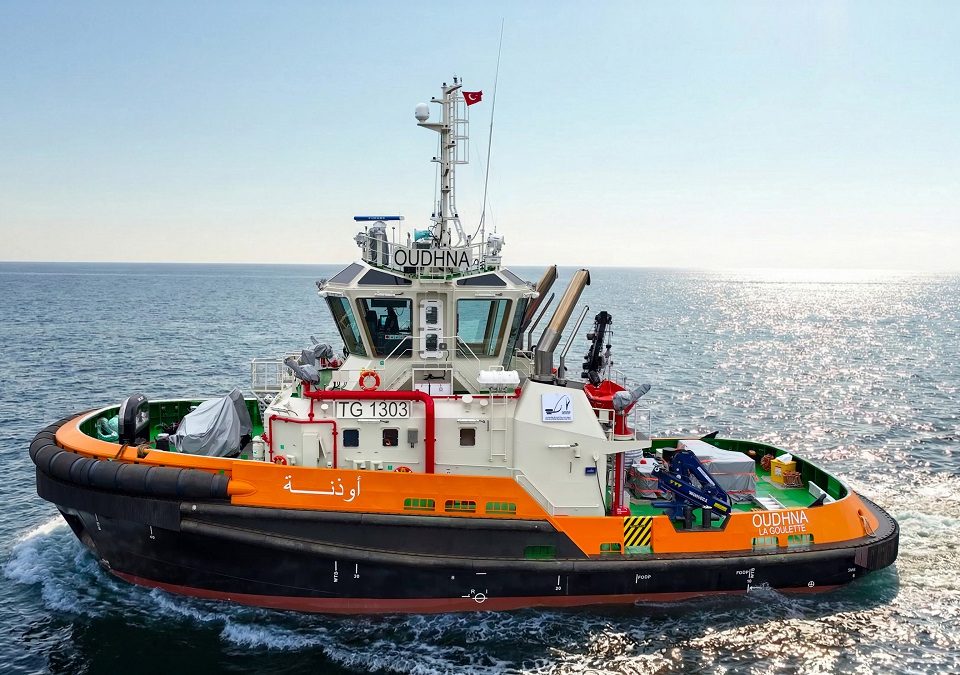This website uses cookies so that we can provide you with the best user experience possible. Cookie information is stored in your browser and performs functions such as recognising you when you return to our website and helping our team to understand which sections of the website you find most interesting and useful.
Giano tug at ITS Marseille with remote control

Launching ceremony of BP Tug for Pakistan Navy held
06/07/2018
Damen ASD Tug 3212 Svitzer Glenrock delivered to Svitzer Australia
09/07/2018Rosetti Marino SpA and Purple Water Ltd. signed in 2016 a constructive licensing agreement for the Giano Tug project, a handling and escort tug, with a compact size (26 m x 13 m), characterized by a stability that is much higher than the standards of tugs available on the market, thanks to its value of metacentrical height of 3.6 m, in many cases more than 2/3 times higher than the others, to its displacement and to its tunnel hull. The special in line arrangement of the azimuth thrusters gives to Giano exceptional maneuverability and great intuitiveness of steering control, so as to avoid errors in the operational response, ensuring full pulling power in all directions.
During the ITS International Tug & Salvage conference in Marseilles, a reference event for the work boats market that ended in late June, French, Danish, Dutch and Italian ship owners could verify these characteristics with sea trials, appreciating its extraordinary manoeuvring qualities, superior to any type of ASD tug.
And Marseilles was the first world premiere of the “REMOTE BRIDGE” for Rosetti Marino and Purple Water Ltd.: in fact a console was installed in the stand of Rosetti Marino and Purple Water that allowed the remote maneuvering of the Giano, thanks to a 4G and VSAT connection provided by Telespazio (Leonardo Finmeccanica group). The remote connection is of type M2M, machine to machine; it is assured by two tunnels encrypted on the Internet to fulfill the requests of Cyber Security with direct connection, Tug – Remote Bridge, without any third-party server. It is possible to remotely control the Giano, wherever it is, controlling the video system, navigation parameters, propulsion and automation. The system fitted on the Giano Tug allows the whole control of the ship’s navigation in assisted form from a remote location. Many were the operators who had the real possibility of remotely operate the Giano; we like to mention the Cap. Carsten Nygaard of Svitzer, who with extreme precision has maneuvered the Giano from the ” Remote Bridge ” placed in the stand.
It should be remembered that at this moment there are no rules for ” Autonomous Ships ” by International organizations such as IMO and the IACS Classification registers, so it can be said that the new technology, tested and available on the market from now on – remote controlled navigation – must be seen as an increase in navigation safety/security; in fact, the ship can benefit from assistance during navigation in critical conditions, accidents, war zones, narrow passages and areas at risk, of the assistance from remote of a ” Senior Officer ” placed in the operational center, who will act as advisor, or may, in the case of incidents and attacks by pirates, regardless of the conditions of the crew or its effective presence (if refugee in the ” Safe Room ”) take command of the ship and bring her safely until the emergency will be over. Issues that are undoubtedly arousing a lot of interest among the P & I Clubs.
It is legitimate to think that if such ground-based assistance had been available only a few months ago, perhaps it would have been possible to avoid the collisions of two ships of the 7th US Navy fleet in the Pacific, Malacca and Japan strait, with a budget of 16 Marines died, in addition to the most serious pollution of the last decade due to the collision and sinking of the oil tanker Iranian Sanchi that caused the spill of 136,000 tons of oil and the death of the whole crew.
The completion of phase 2 of the Giano project, aimed at the creation of the ” Safe Tug ” escort and third-generation handling tug, took place with the presentation at ITS Marsiglia 2018 of Giano tug, the first tugboat whose remote control system has been tested for over 1000 Nm in offshore sailing.
Rosetti Marino and Purple Water, through this important technological innovation, have proven to be able to remotely control a truly operational ship, and not just an experimental and demonstration vessel, positioning itself technologically at the cutting edge in the development of the digital age on ships, now ineluctable, even for niches of ships such as tugs and ferries.





